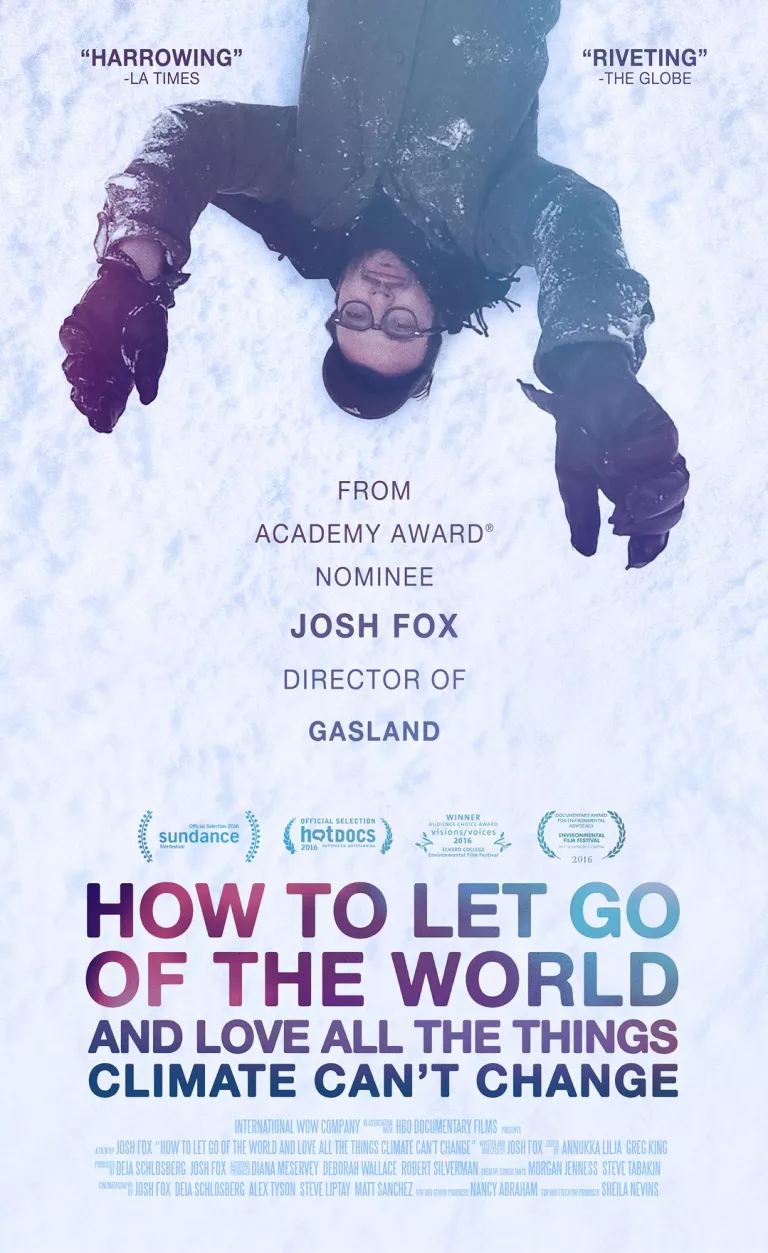In Review: Josh Fox’s How To Let Go of the World

To crib a line from Mark Twain, everybody complains about the weather, but no one does anything about it—except for those environmental advocates who are fighting global climate change. In his newest and best film to date, director Josh Fox (whose 2010 documentary Gasland received an Oscar nomination) puts those eco-warriors at the center of the unfolding story about global warming. In How to Let Go of the World and Love All the Things Climate Can’t Change, Fox becomes a globetrotting climate justice prophet who flies, canoes, kayaks, treks, and jeeps to 12 countries on six continents, and along the way visits people in the Amazon, China, Samoa, New York’s Rockaway Beach, Australia, Zambia, Vanuatu, and Outer Mongolia who are working to stem the climate crisis.
This highly entertaining, imaginative, and often emotional road trip reveals the terrifying effects fossil fuels are wreaking on Earth—from Superstorm Sandy to Greenland’s melting ice sheet to urban China’s toxic levels of air pollution to oil spills in Ecuador. The first part of How to Let Go is pure dystopia, like a mash-up of the sci-fi and horror movie genres. Among the most terrifying moments are when well-known environmental advocates like Bill McKibben and Van Jones are struck dumb when confronted with the jaw-dropping, eye-popping devastation that the petroleum, coal, and gas industries are unleashing worldwide. When some of the most knowledgeable environmentalists are left speechless, you know things are bad. CGI depicts what coastal flooding will look like, leading Fox to throw up his hands in despair and say it’s time to watch cat videos—which he briefly plays.
But then Fox quickly pivots to a more hopeful tone. What prevents this film from being just doom and gloom is Fox’s focus on those who are meeting the challenge and fighting back in various ways. Like fellow movie muckraker Michael Moore, who in Where to Invade Next travels far and wide for ideas on how to improve the United States, Fox visits grassroots activists and scientists across the planet to draw inspiration.
For example, Fox switches gears after portraying the pulmonary problems of millions of Chinese children, such as a little girl named FeiFei, caused by the country’s burning of 3.8 billion tons of coal each year. FeiFei’s mother is determined to oppose pollution, as is Chinese solar pioneer Huang Ming, who is among China’s burgeoning sun-powered movement. At the Great Wall, energy analyst Ella Chou explains her notion of the “moral imagination”—the idea of applying human ingenuity to ethics in order to use our inventiveness in the service of humanity and nature.
In Utah, monkey-wrencher Tim DeChristopher shows Fox the wildlands he tried to save from oil and gas development by bidding on them at a government auction—he was imprisoned for this act of civil disobedience, as seen in the 2012 documentary Bidder 70. While Fox is interviewing McKibben of 350.org at an empty Washington, D.C., cafeteria, a security guard throws them out. (In 2012, Capitol Hill police arrested Fox for filming a public hearing of the House Subcommittee on Energy and Environment in the Rayburn Building.) And in Zambia, Fox films a member of the royal family who travels around the countryside to provide people with solar-powered lightbulbs.
Fox reserves a special place of honor in the climate justice movement for indigenous peoples, extolling the virtues of the Sarayaku villagers in the Ecuadorian Amazon, who successfully resisted the oil industry. The filmmaker also goes to the frontlines of the climate justice struggle at Newcastle, Australia, where—in the documentary’s most thrilling sequence—a flotilla of handmade canoes piloted by the Pacific Climate Warriors seek to prevent 10 coal ships from leaving port. Islanders from 12 Pacific nations participate in this clash with the Australian Coast Guard, as outriggers are matched against jet skis. The Pacific Climate Warriors include residents from atolls in the Marshall Islands and Tokelau (near Samoa) that face catastrophic flooding unless climate change’s course is reversed. The Pacific Climate Warriors’ slogan is “We are not drowning. We are fighting!”
At two hours and five minutes, How to Let Go feels rambling at times. But altogether it’s a stylish cinematic tour de force with rapid montage sequences, high-angle aerial long shots via drones, and camera-phone scenes. At the same time, it is a deeply personal picture, not only directed by, but prominently featuring, the quirky, curious, banjo-strumming Fox. The film ends with the auteur and others dancing to the song “Close to You” performed by the Polynesian group the Silva Bullet Band. The dancers boogie at various locations seen during the course of the documentary, including Brooklyn, California, Samoa, and at Rockaway Beach, where young black ballerinas elegantly move in a symbolic dance of life. It’s political protest in the form of celebration.
This motion picture paladin’s motto could be “Have camera, will travel.” If Gasland deserved its Best Documentary Oscar nomination, the idiosyncratic director just may have struck Oscar gold with How to Let Go. I, for one, can’t wait to hear the singular Josh Fox make an acceptance speech at next year’s Academy Awards ceremony.
How to Let Go of the World and Love All the Things Climate Can’t Change debuts on HBO on June 27. See here for a list of theatrical screenings, and check out the trailer:
 The Magazine of The Sierra Club
The Magazine of The Sierra Club



